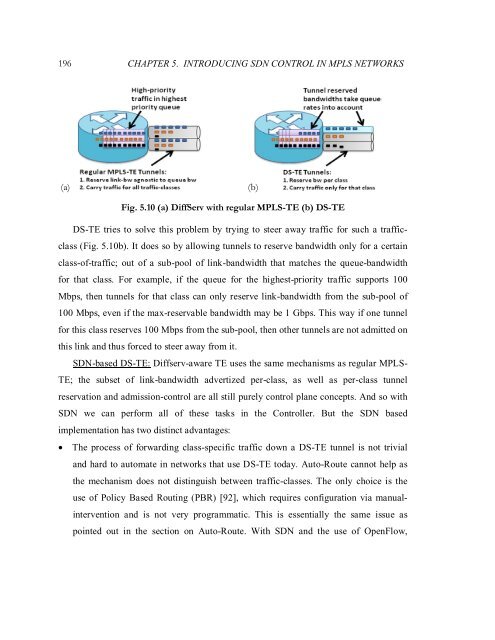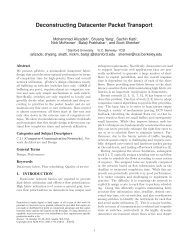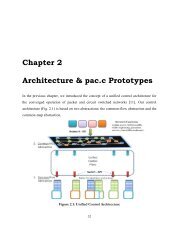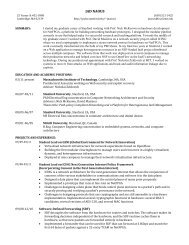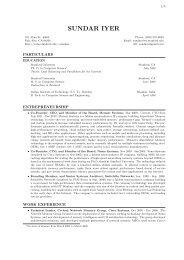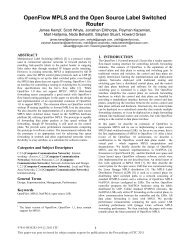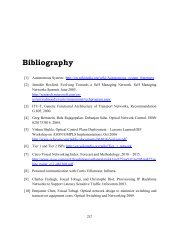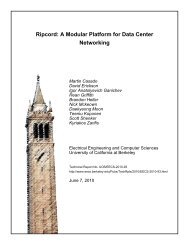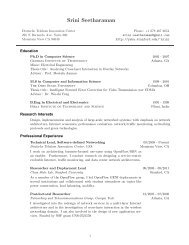Chapter 5 Introducing SDN Control in MPLS Networks - High ...
Chapter 5 Introducing SDN Control in MPLS Networks - High ...
Chapter 5 Introducing SDN Control in MPLS Networks - High ...
You also want an ePaper? Increase the reach of your titles
YUMPU automatically turns print PDFs into web optimized ePapers that Google loves.
196 CHAPTER 5. INTRODUCING <strong>SDN</strong> CONTROL IN <strong>MPLS</strong> NETWORKS(a)(b)Fig. 5.10 (a) DiffServ with regular <strong>MPLS</strong>-TE (b) DS-TEDS-TE tries to solve this problem by try<strong>in</strong>g to steer away traffic for such a trafficclass(Fig. 5.10b). It does so by allow<strong>in</strong>g tunnels to reserve bandwidth only for a certa<strong>in</strong>class-of-traffic; out of a sub-pool of l<strong>in</strong>k-bandwidth that matches the queue-bandwidthfor that class. For example, if the queue for the highest-priority traffic supports 100Mbps, then tunnels for that class can only reserve l<strong>in</strong>k-bandwidth from the sub-pool of100 Mbps, even if the max-reservable bandwidth may be 1 Gbps. This way if one tunnelfor this class reserves 100 Mbps from the sub-pool, then other tunnels are not admitted onthis l<strong>in</strong>k and thus forced to steer away from it.<strong>SDN</strong>-based DS-TE: Diffserv-aware TE uses the same mechanisms as regular <strong>MPLS</strong>-TE; the subset of l<strong>in</strong>k-bandwidth advertized per-class, as well as per-class tunnelreservation and admission-control are all still purely control plane concepts. And so with<strong>SDN</strong> we can perform all of these tasks <strong>in</strong> the <strong>Control</strong>ler. But the <strong>SDN</strong> basedimplementation has two dist<strong>in</strong>ct advantages:• The process of forward<strong>in</strong>g class-specific traffic down a DS-TE tunnel is not trivialand hard to automate <strong>in</strong> networks that use DS-TE today. Auto-Route cannot help asthe mechanism does not dist<strong>in</strong>guish between traffic-classes. The only choice is theuse of Policy Based Rout<strong>in</strong>g (PBR) [92], which requires configuration via manual<strong>in</strong>terventionand is not very programmatic. This is essentially the same issue aspo<strong>in</strong>ted out <strong>in</strong> the section on Auto-Route. With <strong>SDN</strong> and the use of OpenFlow,


